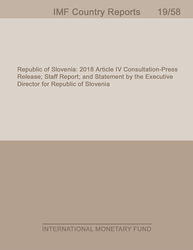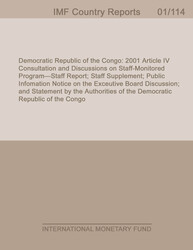
Bosnia and Herzegovina: Financial Sector Assessment Program-Banking Sector Stress Testing-Technical Note
EXECUTIVE SUMMARY The stress tests focused on the banking system and covered all 27 banks operating in BiH. Top-down solvency stress tests were conducted jointly by the FSAP team and staff from the CBBH, using supervisory data provided by the banking agencies. These stress tests were complemented by bottom-up stress tests. They were conducted by individual banks using their own internal models with macroeconomic scenarios provided by the FSAP team and coordinated by both banking agencies. In addition, liquidity stress tests and contagion risk analysis, together with complementary sensitivity analysis were also carried out on all banks in the system. Three macroeconomic scenarios were considered in the financial stability assessment. In addition to a baseline scenario, based on the latest Area Department staff projections, two alternative scenarios, one moderate and one severe, were designed to assess the stability of the banking system. Full-fledged five-year macroeconomic projections were quantified for each of these scenarios. System-wide solvency and liquidity indicators appear broadly appropriate, but significant pockets of vulnerability remain. On the basis of the supervisory data used, stress tests suggest that aggregate stress losses, mainly related to increased provisions in the loan book, although non-negligible, remain broadly manageable. Similarly, system-wide liquidity ratios appear broadly adequate. Nevertheless, there are several banks within the system—mainly small domestically-owned banks—with a wide range of significant vulnerabilities. These include, low liquidity ratios, large concentration risks, and round-trip cross-border exposures. While these banks appear somewhat interconnected among themselves, they present low direct linkages with other banks in BiH, and therefore any potential losses are likely to have limited direct spillovers to the rest of the banking system. However, indirect contagion risks (through e.g., reputational risk), not assessed in the stress tests, could pose significant risks to the stability of the system as a whole. Potential credit risk losses on the loan book represent the most important risk factor for the banking system. Top-down stress tests found that changes in non-performing loans (and loan category migrations) are sensitive to macroeconomic conditions. Top-down and bottom-up stress test results are broadly aligned, except for credit risk losses in the loan portfolio. Aggregate increases in non-performing loans from the top-down stress test are noticeably larger than those of the bottom-up stress tests in the most severe scenario. Although bottom-up aggregate losses tend to increase in line with the severity of the stress test scenario, the behavior of non-performing loans and loan migrations computed by some of the banks show very little reaction to the macroeconomic conditions depicted in the stress test scenarios, thus biasing aggregate results.
Publication date: August 2015
ISBN: 9781513554778
$18.00
Add to Cart by clicking price of the language and format you'd like to purchase
Available Languages and Formats
| English |
Prices in red indicate formats that are not yet available but are forthcoming.
Topics covered in this book
This title contains information about the following subjects.
Click on a subject if you would like to see other titles with the same subjects.
Money and Monetary Policy , International - Economics , Public Policy ,
Also of interest
Summary
Copyright © 2010 - 2025
Powered by:
AIDC



